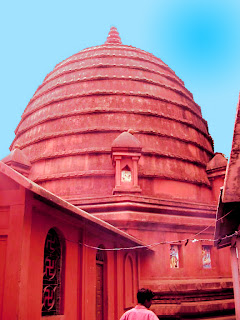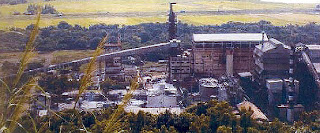Guwahati (Guwa meaning Areca Nut, Haat meaning Market place) is the main cultural hub of the northeastern state of Assam. Cradled by the southern bank of the river Brahmaputra, it is one of the most rapidly growing cities in the whole of India. It also serves as the major commercial, cultural and educational center in the eastern zone of the country. Though the history of Guwahati dates back to several thousand years, the specific time of origin of the city is not known.
In different periods, under the reigns of different kings, Guwahati was allotted different names, like Pragjyotishpura and Durjoya. A famous event in the history of the region is the Battle of Saraighat, where the Mughal Empire was defeated by the leadership and hard work of Lachit Borphukan and his troops. The form of the city is somewhat like a starfish. In the centre of the city, major commercial centers like Fancy Bazaar, Paltan Bazaar, Ulubari, Zoo road and Pan Bazaar are situated.
The rapid growth of Guwahati has lead to its extension in all directions, especially towards the east, west and south areas. Among these extensions, commercially the most important area is the Guwahati-Shillong Road, popularly called the GS Road, which located towards the south. The railway station and the airport can found in the western extension of the region, whereas the eastern extension connects to Narengi and Noonmati. The Bazaars in the city offers all the facilities and advantages expected from any bazaar in a major city. Right from international brands and fast food joints to traditionally made handlooms, one can purchase a variety of goods from these stores.
Guwahati has much to offer in terms of natural beauty and picturesque environment. Located amidst vast stretches of water bodies (beels), hills and islands, the city is the base spot for travelers and tourists from all over the globe. In fact, it is the major gateway to the eastern side of the country. The important tourists attractions in and around the city are Kamakhya Temple, Navagraha Temple, Tirupati Balaji Temple, Kaziranga National Park, Pobitora Wildlife Sanctuary, Sualkuchi and Sarthebari, State Museum, Guwahati Planetarium and Dighalipukhuri.
Places to See:
Assam State Museum is a representation of the unique culture and tradition of the northeastern state. It surpasses all the other museums in India, as the biggest multipurpose museum displaying collections in a variety of sections, like archeology, iconography, epigraphy and even numismatics.
Kamakhya temple is one of the biggest Shakti shrines in the whole of India and also serves an important pilgrimage center for the tantric worshippers as well as the general Hindus. It is a place where the beliefs and practices of the Aryan communities coincide with those of non-Aryan communities, in Assam.
As the name suggests, Navagraha Temple (or the temple of the nine celestial bodies), is a worship place devoted to the nine planets of the solar system, namely Surya (the sun), Chandra (the moon), Buddha (mercury), Mangala (mars), Brihaspati (Jupiter), Shukra (Venus), Shani (Saturn), Rahu (Dragon’s head) and finally Ketu (Dragon’s tail).
Srimanta Sankardeva Kalashetra, situated in Guwahati, is one of the most famous tourist attractions of Assam. It was constructed in 1990, with the aim of exposing and exhibiting to the world, the exclusive culture and tradition of Assam. It is named after the greatest saint of the Vaishnava culture, Srimanta Sankardeva.
Ugratara Temple is an important Shakti shrine, located in the eastern part of the Guwahati city, in Uzan Bazaar. The temple serves as an important pilgrimage center of the state and attracts tourists from far and wide. It was constructed in 1725, by King Shiva Singh of Ahom Kingdom.
The Umananda Temple is located on the Peacock Island in the middle of the river Brahmaputra in Guwahati. The only way to reach the temple is by ferries and motor launches from the Umananda Ghat situated between the State Bank of India and the Ashoka Hotel in Guwahati.
Vasistha Ashram is situated amidst beautiful natural scenes, in the Sandhychal hills of eastern Guwahati. It is an important pilgrimage center, which was built by the Ahom king, Raja Rajeswar, in the second half of the 18th century. Vasistha is, in fact, the last existing monument built by the Ahom dynasty rulers.
Spread over an area of 130 hectares, Assam State Zoo is the only zoo in India where a natural forest still exists. It is one of the major zoos of the country and boasts of a unique diversity of animal habitat. The botanical garden located within the same vicinity is called Guwahati’s green retreat.
Guwahati is the largest city as well as the main business centre of the state of Assam. As such, shopping in the region is very interesting and is an unforgettable experience for the tourists and travelers. There is always something there for every person and visitor to carry back home, as souvenirs and mementos for themselves and for their near and dear ones.















